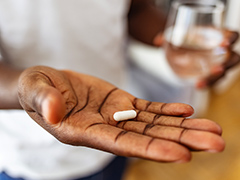Iron: An Essential Part of Your Diet

Walking through the pharmacy, you’ve probably noticed many iron supplements and multivitamins that contain iron. It’s no wonder why when it’s estimated that around 20% of women, 3% of men and half of pregnant women are iron deficient.
Iron is an essential mineral necessary for our bodies to function. It plays a crucial role in our blood where it’s the main part of hemoglobin. This is a protein that transports oxygen throughout the body. It also fuels myoglobin, a protein that stores oxygen in our muscles. For children especially, iron is important for promoting brain development and growth and hormones.
Your body can only get iron through your diet, so it’s important to make sure your diet includes many foods that are rich in protein. There are two types of iron: heme and non-heme. Typically, heme iron is found in animal-based foods and non-heme in plant-based foods.
Both types of iron are important, but your body more easily absorbs heme iron. Here are some foods that are rich in heme iron:
- Beef liver
- Chicken liver
- Clams
- Mussels
- Oysters
- Beef
- Canned sardines
- Turkey
- Chicken
- Halibut
- Haddock
- Salmon
- Tuna
- Ham
Here are some foods that are rich in non-heme iron:
- Enriched cereals
- Cooked beans
- Tofu
- Pumpkin seeds
- Canned lima beans
- Dried apricots
- Baked potato
- Broccoli
- Nuts
- Raisins
- Spinach
- Rice
Since your body does not absorb non-heme iron as well, individuals who don’t eat a lot of meat are more at risk for iron deficiency.
You can improve your body’s absorption of iron by getting enough vitamin C in your diet. Conversely, some foods make it more difficult for your body to absorb iron, including coffee, tea and foods high in calcium. Consuming these foods two hours before or after eating iron can avoid any interaction.
Iron deficiency anemia is one of the most common types of anemia. It’s often caused by not eating enough iron or chronic bleeding. Symptoms of anemia can be tough to identify. They include fatigue, headaches, feeling cold, dizziness or lightheadedness, depression, rapid heart rate and a weak pulse.
If you suspect you might be anemic, talk to your primary care provider. A blood test can confirm your body’s iron levels. They may recommend a diet that contains more iron and potentially a supplement, depending on your specific health.
Need to find a primary care provider? Try our National Doctor and Hospital Finder tool to locate a Preferred provider in your neighborhood.
Sources:
https://www.news-medical.net/health/Sources-of-Iron.aspx
https://www.verywellhealth.com/iron-deficiency-anemia-overview-4797984


